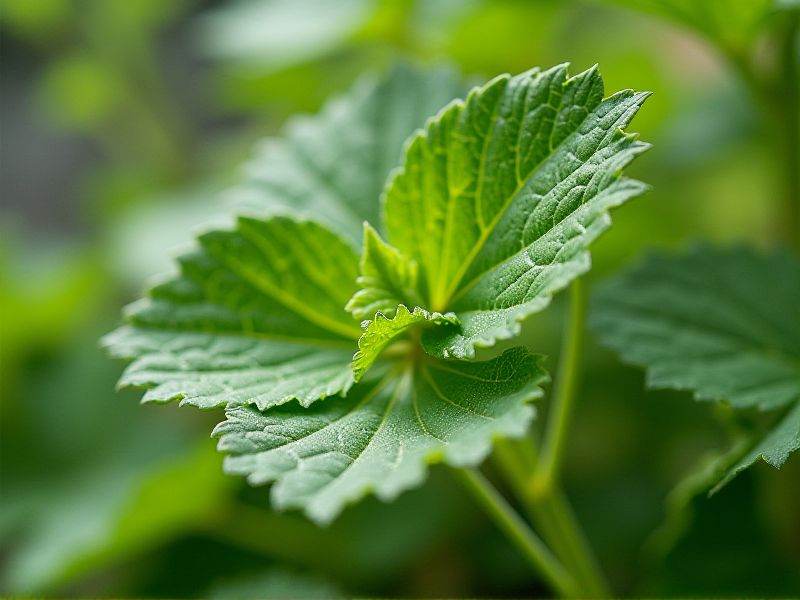
Culinary plants such as basil, cilantro, and rosemary enhance the flavor profiles of dishes, offering fresh aromas and vibrant tastes. Basil, a key ingredient in Mediterranean cuisine, complements sauces and salads, while cilantro adds a zesty kick to salsas and Asian dishes. Rosemary, with its robust pine-like scent, elevates roasted meats and potatoes, making meals more aromatic. Incorporating herbs like parsley and thyme can also bring balance and depth to your cooking, enriching soups and stews. By utilizing these culinary plants, you transform ordinary ingredients into extraordinary culinary experiences.
List of some Culinary plants that amplify cooking
- Basil (Ocimum basilicum)
- Rosemary (Salvia rosmarinus)
- Thyme (Thymus vulgaris)
- Mint (Mentha spicata)
- Parsley (Petroselinum crispum)
- Oregano (Origanum vulgare)
- Cilantro (Coriandrum sativum)
- Sage (Salvia officinalis)
- Dill (Anethum graveolens)
- Chives (Allium schoenoprasum)
Important things about Culinary plants that amplify cooking
Flavor Profiles
Culinary plants like basil, cilantro, and rosemary elevate dishes by adding distinctive flavor profiles that can transform a meal. Fresh basil, known for its sweet and slightly peppery taste, works exceptionally well in Italian dishes and enhances the freshness of salads and sauces. Cilantro, with its vibrant and citrusy notes, is popular in Mexican and Asian cuisines, providing a refreshing contrast to rich ingredients. Rosemary's aromatic and earthy qualities bring warmth to roasted meats and vegetables, making it a versatile herb in your cooking repertoire.
Nutritional Benefits
Culinary plants like basil, thyme, and garlic not only enhance flavor but also offer significant nutritional benefits. Basil is rich in antioxidants and has anti-inflammatory properties, making it a great addition to various dishes. Garlic contains allicin, which has been linked to improved heart health and immune function, providing both flavor and wellness benefits. Incorporating these plants into your cooking can transform meals while promoting overall health and well-being.
Seasonality
Culinary plants thrive on the principles of seasonality, offering the freshest flavors and nutrients at their peak. Herbs such as basil and cilantro flourish in the summer, enhancing dishes with bright, aromatic profiles, while hearty vegetables like squash and root crops excel in the fall and winter months. You can elevate your cooking by incorporating seasonal ingredients, as they provide optimal taste and sustainability, connecting you to local agriculture. Organizing your meals around the seasons not only diversifies your culinary repertoire but also supports a healthier diet by ensuring your ingredients are at their freshest.
Harvesting Techniques
Harvesting techniques for culinary plants significantly impact flavor and aroma, enhancing your cooking experience. Precision harvesting, such as using sharp scissors or shears, ensures minimal damage to the plants, promoting longevity and flavor retention in herbs like basil and cilantro. Timing is crucial; picking vegetables in the early morning or late afternoon captures peak freshness, making ingredients like tomatoes and peppers more flavorful. Employing sustainable practices during harvesting, such as avoiding complete plant removal, allows for continued growth and a more abundant supply for future culinary creations.
Preservation Methods
Culinary plants can be preserved through various methods such as drying, fermentation, and pickling, which enhance their flavors and nutritional value. Drying herbs like basil or thyme intensifies their aromatic qualities, making them perfect for seasoning dishes year-round. Fermentation not only extends the shelf life of vegetables like cucumbers and cabbage but also introduces beneficial probiotics, improving gut health. You can also explore pickling techniques with ingredients like peppers and carrots, allowing you to create tangy, vibrant additions to your meals that elevate your culinary experience.
Pairing Compatibility
Culinary plants like basil, thyme, and rosemary serve as essential elements in enhancing the flavor profiles of various dishes. When you incorporate aromatic herbs alongside ingredients such as tomatoes or grilled meats, they create a harmony that elevates the overall dining experience. Pairing garlic with parsley not only boosts the taste but also adds a touch of freshness to your meals. Exploring the compatibility of these plants in your cooking can transform ordinary recipes into extraordinary culinary creations.
Preparation Techniques
Culinary plants can significantly enhance your cooking through various preparation techniques. For instance, herbs like basil, thyme, and cilantro can elevate the flavor profile of your dishes when they are fresh and finely chopped or muddled. Utilizing techniques such as infusing oils with garlic or chili can create aromatic bases for dressings and marinades that deepen flavor intensity. Additionally, incorporating fresh spices, whether ground or whole, adds depth to your cuisine, transforming everyday meals into gourmet experiences.
Botanical Families
Exploring botanical families reveals a rich variety of culinary plants that can significantly enhance your cooking. The Apiaceae family, which includes parsley, dill, and carrots, brings fresh flavors and aromatic qualities to dishes. Meanwhile, the Lamiaceae family, home to basil, mint, and rosemary, offers versatile herbs that elevate everything from sauces to salads. Understanding these families can help you choose the right ingredients to amplify flavors and create delightful culinary experiences.
Cooking Methods
Culinary plants such as garlic, basil, and rosemary play a vital role in enhancing the flavor profiles of various dishes. Roasting garlic brings out its sweet, mellow flavor, perfect for spreading on bread or adding depth to sauces. Fresh basil can elevate Italian cuisine by providing a fragrant aroma and vibrant taste in dishes like pasta and pesto. Using rosemary in roasting meats or vegetables infuses your meals with its distinctive pine-like essence, making each bite a delightful experience.
Cultural Significance
Culinary plants play a vital role in global cuisines, enriching flavors and enhancing nutritional value. Herbs such as basil, cilantro, and rosemary not only elevate the taste of dishes but also carry historical and cultural meanings linked to their regions of origin. Spices like turmeric and cumin are integral to traditional cooking practices, offering health benefits while serving as symbols of cultural identity. Incorporating these plants into your meals can deepen your appreciation of culinary traditions while also promoting a sustainable approach to cooking.
